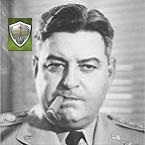ColinWright
Posts: 2604
Joined: 10/13/2005
Status: offline

|
quote:
ORIGINAL: Curtis Lemay
I was calling them "supply lift units". The game already has something called a "supply unit". But, whatever.
The central point is that the supply system has to be volume-based. If I fire a given bullet, you can't fire it too. Primarily, I'm just speculating on the best way of going about working out the precise mechanics of such a system.quote:
Actually it's a very difficult design and programming problem. There are mulitiple means of transport - sea, rail, road, air. Which to use, in what sequence? How to organize the hierarchy of units? They'll need objective tracks. It's further complicated by the fact that it will take multiple turns to get there, often by multiple means. Then the "lift" has to turn around and go back the way it came before it can pick up some more.
If computer programming is like anything else, it's always hard to reliably predict just how hard a task is going to be until you start on it -- or at least seriously start thinking about it. I've rebuilt a truck engine -- that actually proved doable, somewhat to my surprise. I've spent two weeks on what I figured to be a three hour brake repair.
In any case, working out the mechanics for physical units at least defines the process and makes it tangible. Notice how it's gotten you arguing about the specifics of reform instead of just claiming the current system is fine.quote:
They have to be visible to allow interdiction by air/sea/land, etc. And for player intervention in prioritizing. It's also best that the lift be physically realized so that it can take losses, and consume fuel, etc. There's no advantage, as far as the computer is concerned, to making them invisible anyway.
I don't see why the player has to see the units to make interdiction possible. As to what's an advantage, thee point is to not have one's view of the battle cluttered up with eight hundred supply units making their way here and there. Presumably, these units would be left visible during development. Perhaps you could even making viewing them an option. However, most players would rather just focus on the fighting.quote:
The supply has to be physically carried to the individual units. That's where most of the congestion and enemy land interdiction will take place. And that part of the trip has to have its lift requirements and terrain effects modeled. That means hundreds, if not thousands, of more "discrete supply units". And note that this method eliminates HQ effects. That needs to be added back in somehow.
One could have the supply units head for the HQ's. That would actually model the effect of HQ's quite nicely. As to all the 'hundreds, if not thousands' -- well, that's why I think they should be invisible.quote:
What's the advantage for that specific subject? This could be far more easily modeled via the current system just with some refinements to the supply radius thing. It would also require the implementation of a "semi-supplied" state.
No it can't. In point of fact, when the Germans thought they were going to succeed in busting across the Caucasus, they formed one specialized brigade-sized unit for exploitation: they knew -- even if you don't -- that while they might be able to keep one unit in supply over such a distance and such terrain, they couldn't keep a hundred in supply under such conditions.
However much you might wish it were so, a paradigm that assumes that one unit consumes the same amount of supply as a hundred units just isn't valid.
quote:
The only real advantage would be in the cases I've stated: where modeling sea operations are critical to the scenario.
Now this just isn't true. At this point, you might as well start typing, 'Santa Claus is real, I know he is!!!' Keep it up and I'm going to type 'Yes, Virginia.'quote:
By the way, how do you propose to handle "supplied" and "unsupplied" status?
A unit would always use some supply. Very little, if it wasn't moving and wasn't fighting. but some. If the supply being consumed exceeds the supply being delivered, the unit starts having problems. In this connection, note that 'surrounded' units that weren't being actively attacked withered away very slowly.quote:
??? They should be subject to combat just like any other unit. Don't you want to allow the RN to intercept and sink the supply convoys to England? Then there's the subject of escorts.
Point is, one wants to be able to move and to fight without dealing with all those supply units. Actually, the current 'hex ownership' paradigm could be replaced by having to pay the cost if the hex you're entering contains an actual supply unit. Or not -- the whole hex ownership penalty should go, anyway.quote:
Interdiction complicates things. To review - force supply is currently reduced by the enemy interdiction level. But now, supply is going to be physically interdicted like unit movement. So the current interdiction supply reduction will need to be discarded. To then get things right, the rail cap (like the sea cap & air cap, etc.) may need to be modeled via physical rail lift units - made up of physical trains, etc. Cargo ships, & transport planes, too.
This doesn't follow. You could still interdict rail movement of 'real' units even if you were also interdicting specific supply units instead of just globally reducing enemy supply. In any case, if you also want to model cargo planes, I'm all for that. As an option, of course.
However, it's not an issue that needs to be addressed to implement the system.
< Message edited by ColinWright -- 1/14/2008 12:04:33 AM >
_____________________________
I am not Charlie Hebdo
|
 Printable Version
Printable Version








 New Messages
New Messages No New Messages
No New Messages Hot Topic w/ New Messages
Hot Topic w/ New Messages Hot Topic w/o New Messages
Hot Topic w/o New Messages Locked w/ New Messages
Locked w/ New Messages Locked w/o New Messages
Locked w/o New Messages Post New Thread
Post New Thread